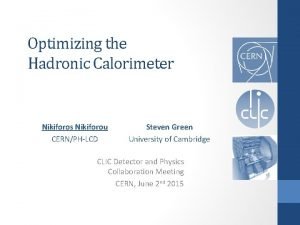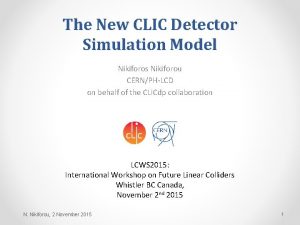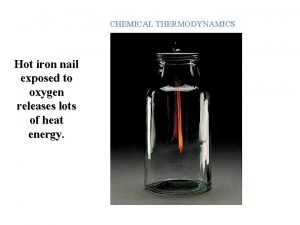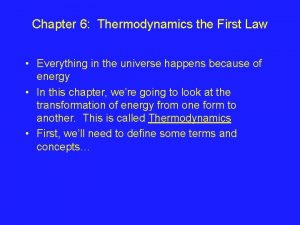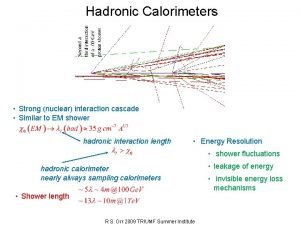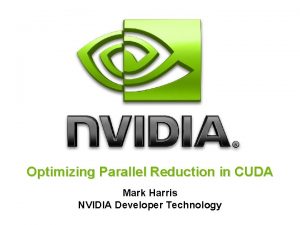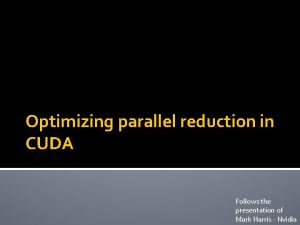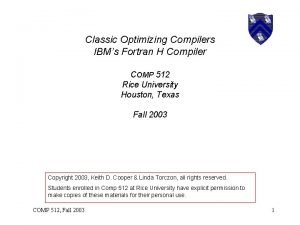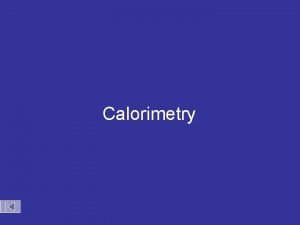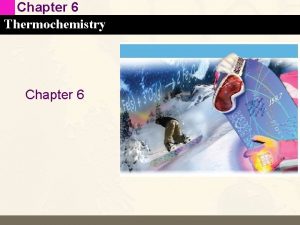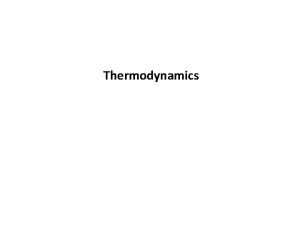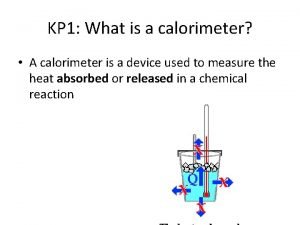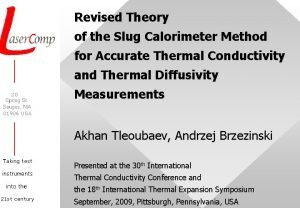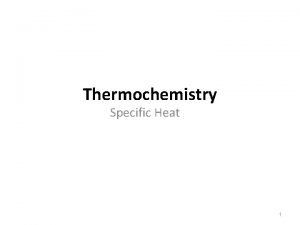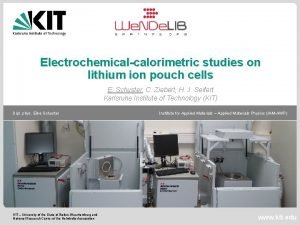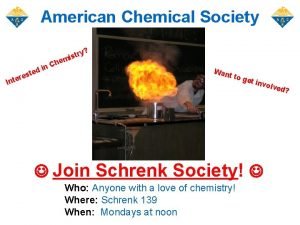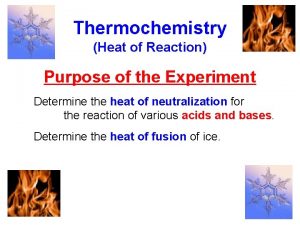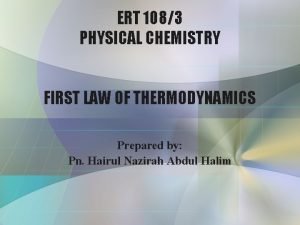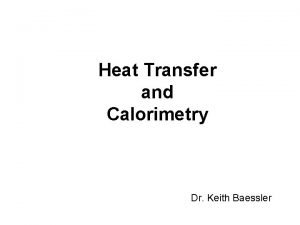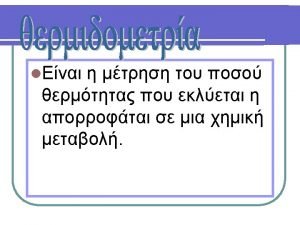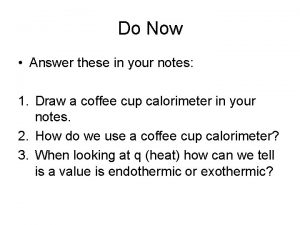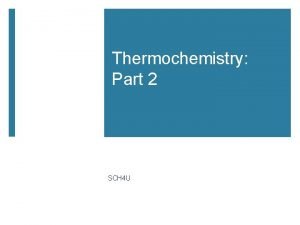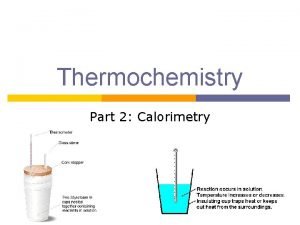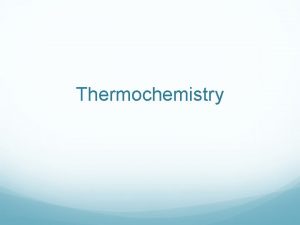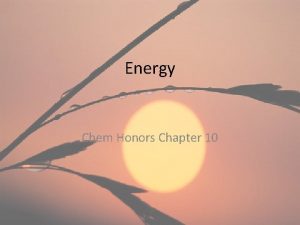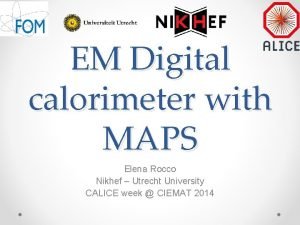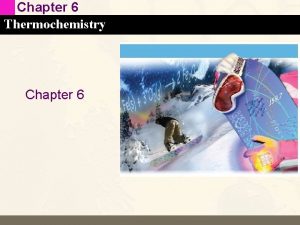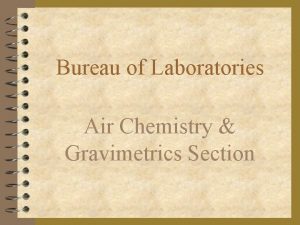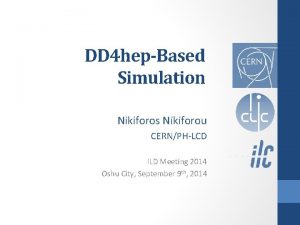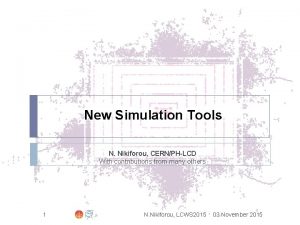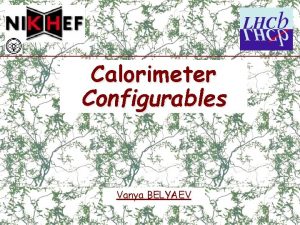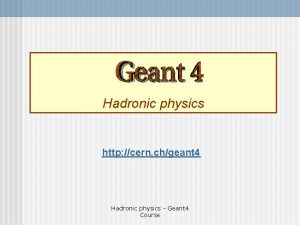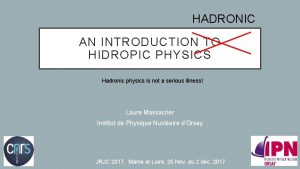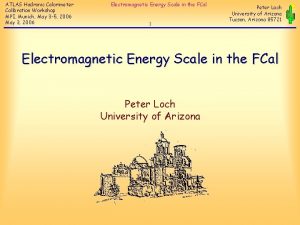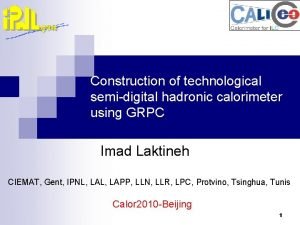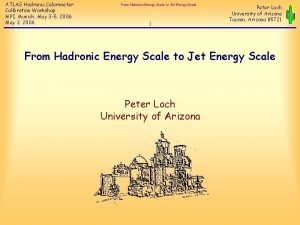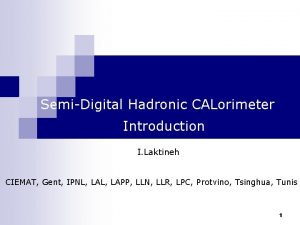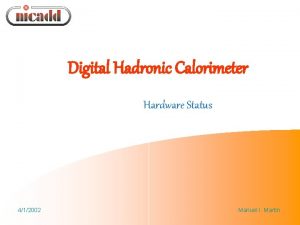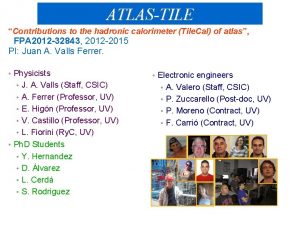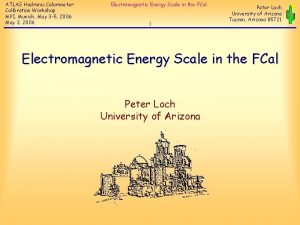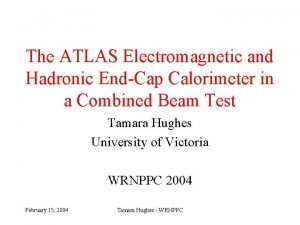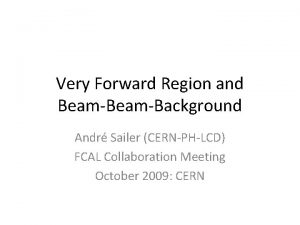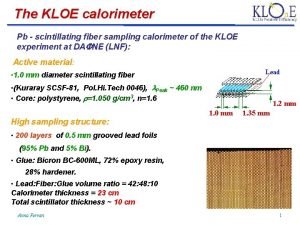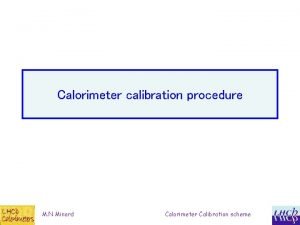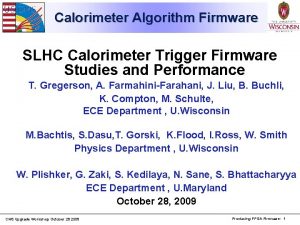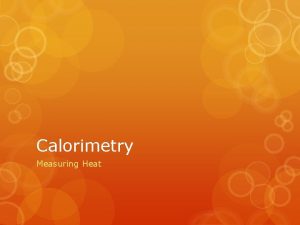Optimizing the Hadronic Calorimeter Nikiforos Nikiforou CERNPHLCD Steven
















![HCal Forward Coverage Extension cosθ θ [rad] θ [deg] 0. 95 0. 32 18 HCal Forward Coverage Extension cosθ θ [rad] θ [deg] 0. 95 0. 32 18](https://slidetodoc.com/presentation_image_h/158327d1fb04e34d3bb66fbb60c84b34/image-17.jpg)















- Slides: 32

Optimizing the Hadronic Calorimeter Nikiforos Nikiforou CERN/PH-LCD Steven Green University of Cambridge CLIC Detector and Physics Collaboration Meeting CERN, June 2 nd 2015

Introduction • HCal Barrel Optimization: Absorber selection • HCal Segmentation Optimization: #Layers, Cell size, … • HCal Endcap Optimization: Forward Coverage Extension • Some notes: • Optimization often requires independently varying parameters that are correlated • Modifying the geometry requires recalibrating the detector CLICdp Collaboration Meeting • In this talk we will cover mainly three general topics 02/06/2015 • The topic is converging on the parameters for the HCal in the next simulation model • We used the updated calibration procedure from Cambridge • We are not applying Non Linearity Corrections (NLC) • At this stage we mostly see shallow dependences 2

CLICdp Collaboration Meeting 02/06/2015 HCal Barrel Absorber Material • 3

Notes: QGSP_BERT_HP MHHHE=100000 Ge. V Re-Calibration at each step 17. 0 15. 0 Fe, NO Detailed shower W, Detailed Shower W, NO Detailed Shower CLICdp Collaboration Meeting 13. 0 02/06/2015 σ(Ε)/μ [%] W/Fe Response to 50 Ge. V Single K 0 L Vs HCal Barrel Timing Cut Fe, Detailed Shower 11. 0 9. 0 7. 0 1 10 10000 Upper End of Timing Window[ns] • With the detailed shower option on Tungsten does much better than previously thought at narrower timing windows (Steel also improves at 10 ns) • Important to enable storing the Detailed Shower information 4

5 19 Fe 60 L HP DS TC 10 ns 7. 55 λΙ 4. 8 4. 6 19 Fe 60 L HP DS TC 100 ns 7. 55 λΙ 4. 4 4. 2 02/06/2015 Notes: -Time window for barrel. Fe Endcap timing window is always 10 ns -QGSP_BERT_HP -MHHHE=100000 Ge. V -Detailed shower -No jet reconstruction 10 W 70 L HP DS TC 100 ns 7. 4 λΙ CLICdp Collaboration Meeting Jet �� _�� /�� _�� (RMS 90) [%] Results using Analyse. Performance in Pandora. Analysis 4 3. 8 3. 6 3. 4 3. 2 3 10 1000 √�� [Ge. V] • W appears to perform better than Fe (without using s/w comp) but it should not drive solely our decision

02/06/2015 • CLICdp Collaboration Meeting 6

Overlap 28 26 24 02/06/2015 20 18 CLICdp Collaboration Meeting LESS IS BETTER 22 16 19 Fe_60 L 14 12 10 8 10 W_70 L Notes: -Time window for barrel: 10 ns for Fe, 100 ns for W -Fe Endcap timing window is always 10 ns -QGSP_BERT_HP -MHHHE=100000 Ge. V -Detailed Shower 0 500 1000 19 Fe_60 L + 60 BX Ov 10 W_70 L + 60 BX Ov 1500 2000 2500 √�� [Ge. V] The performance of the two models is very similar See next slide for equivalent plot using Separation

2. 8 Note: for the Pandora Paper a different selection was used for the case without background 2. 6 02/06/2015 2. 4 2. 2 2 MORE IS BETTER Separation [�� _�� ] 1. 8 19 Fe_60 L 1. 6 10 W_70 L 19 Fe_60 L + 60 BX Ov 1. 4 Pandora Paper no overlay 1. 2 Pandora Paper + 60 BX Ov 10 W_70 L + 60 BX Ov 1 0 500 1000 Notes: -Time window for barrel: 10 ns for Fe, 100 ns for W -Fe Endcap timing window is always 10 ns -QGSP_BERT_HP -MHHHE=100000 Ge. V -Detailed shower 1500 But what if we need to have a realistic MHHHE? Next slide …. 2000 2500 √�� [Ge. V]

Effect of MHHHE Cut for Single 50 Ge. V K 0 L (i. e. cut on the max hadronic energy on a single hcal hit) 35. 0 σ(Ε)/μ [%] 95. 0 90. 0 Fe, 10 ns 25. 0 W, 100 ns 20. 0 Fe, 10 ns 85. 0 30. 0 02/06/2015 100. 0 15. 0 W, 100 ns 80. 0 10. 0 75. 0 Single 50 Ge. V K 0 L 70. 0 0. 1 10 100000 MHHHE [Ge. V] Single 50 Ge. V K 0 L 0. 0 0. 1 10 100000 MHHHE [Ge. V] CLICdp Collaboration Meeting μ(Ε)/Ε [%] 105. 0 9

19 Fe 60 L HP DS TC 10 ns 7. 55 λΙ 8 10 W 70 L HP DS TC 100 ns 7. 4 λΙ 7 02/06/2015 10 W 70 L HP DS TC 100 ns 7. 4 λΙ MHHHE 1 19 Fe 60 L HP DS TC 10 ns 7. 55 λΙ MHHHE 1 6 Notes: -Time window for barrel. Fe Endcap timing window is always 10 ns -Detailed Shower is ON -QGSP_BERT_HP -No Jet Reconstruction 5 CLICdp Collaboration Meeting Jet �� _�� /�� _�� (RMS 90) [%] 4 3 2 10 1000 √�� [Ge. V] With a 1 Ge. V MHHHE cut the performance in high energies is degraded for both, but Fe wins (“poor man’s SW compensation”) -> What about a more “realistic” event topology? (next slide)

19 Fe_60 L 10 W_70 L 24 10 W_70 L + 60 BX Ov LESS IS BETTER 22 10 W_70 L MHHHE 1 + 60 BX Ov 20 19 Fe_60 L MHHHE 1 18 19 Fe_60 L MHHHE 1 + 60 BX Ov 16 14 02/06/2015 19 Fe_60 L + 60 BX Ov CLICdp Collaboration Meeting 26 Overlap [%] 12 0 500 1000 1500 2000 2500 √�� [Ge. V] Similar conclusion: for low MHHHE cuts, Fe performs better

CLICdp Collaboration Meeting 02/06/2015 HCal Parameter Optimization • 12

HCal Cell Size CLICdp Collaboration Meeting 02/06/2015 S. Green, Cambridge • Using a 7. 5 λ HCal model • 30 mm x 30 mm (Currently used) is a reasonable option for the simulation model • Note: suspicions for bias towards 30 mm case under investigation 13

HCal Depth CLICdp Collaboration Meeting 02/06/2015 S. Green, Cambridge • Results in line with previous studies: ~7. 5λ in the HCal is optimal 14

HCal #Layers CLICdp Collaboration Meeting 02/06/2015 S. Green, Cambridge • HCal Depth (7. 5 λ) and sampling fraction kept constant • Currently using 60 Layers in HCal 15

HCal Scintillator Thickness CLICdp Collaboration Meeting 02/06/2015 S. Green, Cambridge • 3 mm Scintillator thickness appears to be optimal • => Plan to use 3 mm for the next Simulation model 16
![HCal Forward Coverage Extension cosθ θ rad θ deg 0 95 0 32 18 HCal Forward Coverage Extension cosθ θ [rad] θ [deg] 0. 95 0. 32 18](https://slidetodoc.com/presentation_image_h/158327d1fb04e34d3bb66fbb60c84b34/image-17.jpg)
HCal Forward Coverage Extension cosθ θ [rad] θ [deg] 0. 95 0. 32 18 8. 6 • Modified ILD_o 1_v 06 driver, removed LHCal, CLIC_ILD 0. 989 0. 15 masks, … ILD* 0. 991 0. 13 7. 5 • Verified that resulting performance is 0. 998 0. 06 3. 2 • Study effects of increasing coverage of HCal by extending it down to beampipe consistent with Nominal ILD models tanθ R [mm] 0. 33 756 0. 15 400 0. 13 350 0. 06 150 R Values for L=2. 65 m CLICdp Optimization Meeting 25/03/2015 *If we ignore LHCal coverage 17

CLICdp Collaboration Meeting 02/06/2015 18

CLICdp Collaboration Meeting 02/06/2015 19

02/06/2015 Reconstructed CLICdp Collaboration Meeting True Z Direction 20

CLICdp Collaboration Meeting 02/06/2015 Conclusions • 21

BACKUP SLIDES 22 CLICdp Collaboration Meeting 02/06/2015

CLICdp Collaboration Meeting 02/06/2015 m. JJ Vs Jet Directions 23

CLICdp Collaboration Meeting 02/06/2015 24

CLICdp Collaboration Meeting 02/06/2015 Additional Study on HCal Absorber Material (S. Green, Cambridge) 25

Notes: 50 Ge. V K 0 L QGSP_BERT_HP Re-Calibration at each step 17. 0 15. 0 CLICdp Collaboration Meeting 13. 0 Fe, Detailed Shower Fe, NO Detailed shower W, Detailed Shower W, NO Detailed Shower W, Detailed Shower, MHHHE=1 Fe, Detailed Shower, MHHHE=1 W, NO Detailed Shower, MHHHE=1 Fe, NO Detailed Shower, MHHHE=1 02/06/2015 σ(Ε)/μ [%] Effect of Max. HCal. Hit. Hadronic. Energy 11. 0 9. 0 7. 0 1 10 10000 Timing Cut [ns] • Steel performance can be improved by optimizing MHHHE (~ sw comp) • With this in mind, its unlikely that the conclusions will change for the HCal Barrel • What about more “realistic” events (jets, backgrounds)? Next slides … 26

5 Notes: -Time window for barrel. Fe Endcap timing window is always 10 ns -Detailed Shower (DS – solid lines) data are the old ones, without NLC 19 Fe 60 L HP TC 10 ns 7. 55 λΙ 4. 8 4. 6 19 Fe 60 L HP DS TC 100 ns 7. 55 λΙ 4. 4 19 Fe 60 L HP TC 100 ns 7. 55 λΙ 4. 2 10 W 70 L HP DS TC 100 ns 7. 4 λΙ 02/06/2015 19 Fe 60 L HP DS TC 10 ns 7. 55 λΙ 10 W 70 L HP TC 100 ns 7. 4 λΙ 4 CLICdp Collaboration Meeting Jet �� _�� /�� _�� (RMS 90) [%] 3. 8 3. 6 3. 4 3. 2 3 10 1000 Only Good news: √�� [Ge. V] • 10 ns Fe JER is better than before • The previous conclusions are still valid: W is a bit better than Fe (without s/w comp) but it should not drive solely our decision

Effect on Jet Reconstruction CLICdp Collaboration Meeting 02/06/2015 Look at Forward ZZ events and Extended HCal since we want to see the effects in the presence of background (also had them handy) 28 Without overlay, the effect appears to be small When including overlay (where timing cuts make a difference) the structure of the tails is different • See next slide for wider range

CLICdp Collaboration Meeting 02/06/2015 Interpretation is not trivial: • On one hand, trying to understand differences in tails • On other hand, comparing a steeply falling distribution (Z peak) with a ratio plot… 29

CLICdp Collaboration Meeting 02/06/2015 30 Would have expected the discrepancies be more prominent with “Tight”

CLICdp Collaboration Meeting 02/06/2015 31 Probably competing effects need to be disentangled (e. g. look in θ-bins)

02/06/2015 CLICdp Collaboration Meeting PFO Selection Cut Definitions 32
 Steven green vk
Steven green vk Nikiforos nikiforou
Nikiforos nikiforou Calorimeter problems
Calorimeter problems Coffee cup calorimeter equation
Coffee cup calorimeter equation Constant volume calorimeter
Constant volume calorimeter Hadronic
Hadronic Hadronic cascade
Hadronic cascade Optimizing parallel reduction in cuda
Optimizing parallel reduction in cuda Cuda parallel reduction
Cuda parallel reduction The fortran optimizing compiler
The fortran optimizing compiler How is economizing different from optimizing?
How is economizing different from optimizing? Optimizing patient flow
Optimizing patient flow Calorimeter
Calorimeter Dhrxn
Dhrxn Calorimetry equation
Calorimetry equation How does a calorimeter work
How does a calorimeter work Slug calorimeter
Slug calorimeter Homemade calorimeter
Homemade calorimeter Accelerating rate calorimeter
Accelerating rate calorimeter Bomb calorimeter uses
Bomb calorimeter uses Bomb calorimeter uses
Bomb calorimeter uses Bomb calorimeter
Bomb calorimeter Keith baessler
Keith baessler Constant volume calorimeter
Constant volume calorimeter Now answer these questions
Now answer these questions 62g
62g Function of bomb calorimeter
Function of bomb calorimeter Bomb calorimeter
Bomb calorimeter Calorimeter constant
Calorimeter constant Digital calorimeter
Digital calorimeter Benedict's oxy calorimeter
Benedict's oxy calorimeter Dhrxn
Dhrxn Parr calorimeter
Parr calorimeter
